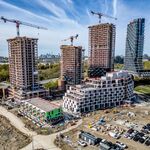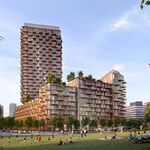ssiguy2
Senior Member
The DLR is totally grade separated - it is an elevated subway not a tram system. Tram systems generally haven't been very successful in huge cities as big as Toronto. If we want rapid transit we should use elevated railways and existing rail corridors to cut costs, not build slow streetcar lines that stop at every fence post. We are in danger of ending up like Los Angeles (which has a crappy light rail system hardly anyone uses) if we don't build subways.
The 320,000 passengers who take LA's Metro Rail everyday would beg to differ. Metro Rail is both subway and rapid transit LRT similar to DART or CTrain not slow moving TC. It is also expanding a dizzing pace with another new 7 mile line LRT , the Expo Line, set to open in just 6 weeks. Toronto should be so lucky.
The reason why LA is managing to expand it's system so quickly is that the citizens of LA, unlike Torontonians, are willing to put large sums of their own money into rapidly expanding the system. LA residents have consistently approved sales tax increases and gass taxes to fund expansion. In other words they are willing to, unlike Torontonians, put the money where their mouths are. The state and feds would never just give money to local governments for transit and not expect the locals to chip in their fair share.
If I was McGuinty I would be so furious at Toronto right now that I would seriously consider pulling all the funding. No matter how much they fork over it's never enough. I think McGuinty should hold all funding back until Torontonians themselves agree to chip in another one third of the costs for expansion. That would give them $11 billion to work with. It would force Torontonians to put their money where their mouths are and may result in them being more accountable ass to where the money is going and how it's being spent ie a whopping $1.2 billion to transfer a tiny 6 km SkyTrain line over to LRT.




